Particularly nifty are the multimedia controls running along the top edge of the handset, which allow you to skip tracks, play or pause music (as well as control the phone ringer) without having to take it out of your bag or pocket. That almost makes up for the side-mounted 3.5mm headphone socket, ideally placed to catch your headphones cable as you try to whip out the phone.
technology magazine
Leaked photos are one thing, but we do enjoy a video of a pre-release device to really see how it fits in the hand. Having seen the BlackBerry Pearl 9100 (aka Striker) a little over a week ago, now comes a video of the compact smartphone in action courtesy of Salomondrin. No word on how he acquired the Pearl 9100, but he gives a decent overview of its form-factor and the changes from earlier handsets. In terms of specifications, the Pearl 9100 has GSM 3G (i.e. it uses a SIM rather than CDMA networks) and of course there’s the optical trackpad as seen on some of RIM’s other recent BlackBerry devices. Around the back there’s a 3.2-megapixel camera, and the handset runs BlackBerry OS 5.0.0.350 with 256MB of memory. Particularly nifty are the multimedia controls running along the top edge of the handset, which allow you to skip tracks, play or pause music (as well as control the phone ringer) without having to take it out of your bag or pocket. That almost makes up for the side-mounted 3.5mm headphone socket, ideally placed to catch your headphones cable as you try to whip out the phone.
1 Comment
One of my big pet peeves is when people wear Bluetooth headsets when they aren’t driving and can actually hold the handset up to their ear. A long time ago I could see the Bluetooth headset as a status symbol, but today everyone, including my Grandma, has one so we aren’t impressed. If you like to wear Bluetooth headsets but don’t want others knowing you are wearing it, here is the product for you. Sky Mall is offering a “covert” Bluetooth headset called the BrickHouse Security 159-ME-PASSIVE. The headset is otherwise known as the Invisible Bluetooth Earpiece. The thing is poked way down inside your ear canal where it can’t be seen from the outside. Removal is done with an included “super strong” magnet. That makes me nervous, what if the magnet isn’t super strong enough. It would suck to have to go to the doctor and get the thing removed from your ear. The earpiece synchronizes to any Bluetooth phone and has a remote mic for picking up voice. The earpiece is available now for $199.95. Apple fans and developers keep their ear close to the ground to find the new tidbits on coming Apple products from all sorts of sources. Often those sources include usage logs and deeply buried profiles in updates and software from Apple. Developer Pandav has discovered a usage record for an iPhone model that has not been announced. Pandav discovered a usage record for an iPhone 3,1 in its analytics application. The unannounced Apple device was used to access the iBART transportation guide for the San Francisco train system. The usage numbers correspond to those attached to devices by Apple. References to the iPhone 3,1 were spotted in August reports MacRumors, but this is the first time that the iPhone 3,1 was spotted in the wild. The iPhone 3GS was the iPhone 2,1. Perhaps the 3,1 is the oft rumored and talked about Verizon iPhone? The CrunchPad has gone from steamrolling to just getting run-over, with project founder Michael Arrington reporting that not only has the 12-inch touchscreen web-slate been axed but a storm of legal arguments created. In a long post on TechCrunch, Arrington details the sudden discovery that their manufacturing partner, Fusion Garage, was looking to cut them out of the business and threatening to push ahead without full ownership of the CrunchPad IP. The legal hurdles seem to have been prompted by Fusion Garage looking to renegotiate their part in the project, or more precisely the equity split. In the end, the courts will decide; TechCrunch are “almost certainly” going to file lawsuits against their former partners. “We’re still completely perplexed as to what happened. We think they were attempting to renegotiate the equity split on the company behind CrunchPad, which was to acquire Fusion Garage. Renegotiations are always fine. But holding a gun to our head two days before launching and insulting us isn’t the way to do that. We’ve spent the last week and a half trying unsuccessfully to communicate with them. Our calls and emails go unanswered, so we can’t even figure out exactly what’s happened” Michael Arrington, TechCrunch Away from the production wrangles, it’s disappointing news both for anybody interested in portable electronics and for those to whom the CrunchPad project represented the potential for individuals and small companies to come up with an idea and make it reality. Right now it looks like SlashGear columnist Michael Gartenberg’s predictions were correct: citizen gadgetry is harder than it seems. Since you can now pick up a set of chumby guts without bothering with the standard casing, the real fun for the platform is in fashioning a unique housing for the internet-connected widget display. That can be as basic as the cardboard box the components come with, or you can go the route of one particular Etsy seller and put together a somewhat Steampunk-esque retro enclosure. Called the Chumbophone, as far as we can tell the various brass horns, controls and other appendages are all decorative rather than functional. The only real controls are the power button, the front panel key and the chumby’s 3.5-inch 320 x 240 touchscreen, which is still enough to browse various web widgets, control music – either streaming or local – and do everything else that makes chumby so appealing. Of course, custom cases don’t generally come cheap, and the Chumbophone is no different. Asking price is $375, while buying a bare-bones chumby kit of your own would regularly set you back $139. It’s up to you whether you reckon $236 is reasonable for all the wood, brass and hard-work that’s gone into making it. Nokia has a problem: it is both the largest handset vendor in the world, by a significant margin, and the largest smartphone vendor in the world – again, by a significant margin. Yet it has never managed to crack the U.S. smartphone market, and it has begun losing market share even in its European strongholds, primarily to Apple, though RIM, Samsung, and HTC are also threats. Nokia admits that it was caught sleeping while Apple first redefined the mobile user experience with the iPhone, and then again when Apple reenergized app development with the App Store. Nokia’s initial response has been lackluster: adapting its existing Symbian S60 OS to support touch, applying that to a few phones (the 5800 and the N97), and stumbling in its initial launch of the Ovi Store. Despite shortcomings in Symbian S60 (where apps and settings are located appears to have been chosen at random) and a wildly inconsistent touch experience, the 5800 and N97 have sold over 10 million units. Nokia has sold well over 100 million Symbian S60 phones overall, which puts it in a classic case of what Clayton Christensen calls the Innovator’s Dilemma: Nokia’s existing customers are happy with S60, so Nokia has resisted cannibalizing it. However, the iPhone may have launched without 3G or corporate email, but Apple keeps adding features with each new version, so when S60 users are ready to buy a new phone, they are increasingly picking one from Apple or one of Apple’s competitors. (It is also worth noting that arguments against cannibalizing S60 can only be made for Europe – in the U.S., S60 has never had any traction whatsoever.) The solution to the Innovator’s Dilemma is to fund skunkworks development or a spin-off that attacks the new technology on its own terms. While initially planned as a way to get Nokia’s feet wet in open source software, Nokia does have another OS, Maemo Linux, that it has been quietly using for its line of Internet tablets (770, N800, and N810). At Nokia World in early September, Nokia announced Maemo 5 and the N900, the first Maemo phone. When I first saw Maemo 5 demonstrated just ahead of Nokia World, my first reaction was to question why Nokia would limit Maemo to pricey, high end devices. After all, S60 isn’t competitive, and Maemo looks really, really cool. Why not just kill S60 and switch to Maemo? After playing with a production N900 for the past couple of weeks, I have discovered the answer: Maemo is nowhere near ready for mainstream consumers. There was reason for my initial optimism: the OS has power to spare; it is basically a desktop Linux system in a tiny package. Maemo can handle multiple live apps minimized to little cards (similar to Palm’s webOS); the browser is unadulterated Mozilla code and includes support for a full implementation of Flash 9. The N900 has a high resolution 800×480 screen, TI OMAP3 (Cortex A8) processor, 32 GB flash storage plus an empty microSD card slot, forward facing VGA camera, and 5 MP camera on the rear with dual LED flashes and Carl Zeiss branding. There is a sliding physical QWERTY keyboard, and, for watching media, a pull out kickstand. The N900 has WiFi, quadband GSM and Triband HSPA 900/1700/2100, making it perfect for T-Mobile’s 3G network in the U.S. Unfortunately, the whole is much less than the sum of its parts. The user interface is maddeningly inconsistent and opaque, and while you can learn to live with its quirks after a while, why should you have to? Nearly every mobile OS does a better job of making it easy to navigate; the iPhone is the easiest (at the expense of efficiency) and Palm’s webOS is the most elegant. Nokia needs to add hard buttons or dedicated screen real estate for navigating and launching options menus. For example, touching the top left corner is usually the “go back” area. Except when touching the blank space in between app tiles backs you out. Except when you’re in a web browser, and a link is occupying the top left, then there’s really no way to get back at all without first minimizing the view. The resistive touchscreen is another problem – even when you push in the right spot, it doesn’t always register. I find myself repeatedly pulling out the stylus, and that should simply never happen on a modern smartphone. There are no SEND or END keys (Motorola’s DROID has this problem, too), and there is no permanent place for the soft keys – depending where you are in the UI, it can be awfully hard just to find the dialer. This is the first phone I have used in a while where making a phone call isn’t just a secondary use case, but is barely a use case at all. Web browsing is good, though navigating around a web page is not as smooth as Apple’s Safari. Still, this is one area where the N900 can do things no other phone on the market can do, at least until Adobe rolls out Flash 10 support broadly next year. YouTube videos play smoothly, and navigating around Flash-heavy sites is possible. (Theoretically, you should even be able to watch Hulu on the N900. Practically, it doesn’t work, even over WiFi – the video loads, slowly, then… stops.) While I encountered system messages that would terrify non-technical users (do you want to update your phone’s SSL sockets? Who knows?), the N900 is better than previous Maemo Linux devices. For example, downloading and installing applications is a simple process now. But there aren’t that many apps yet, and Nokia’s Ovi Store still has a “Coming Soon” banner. Nokia is providing for cross platform (Symbian and Maemo) development with upcoming versions of its QT tools, but Nokia’s focus with developers is still on Symbian. This leaves Nokia with some tortured market positioning: Nokia told me it is firmly committed to Symbian as its smartphone platform of choice, while Maemo will be relegated to high end devices and aimed at consumers who want more of a computer and less of a phone. The latter description fits every iPhone, Android, and webOS user (and those handsets start at just $100 after carrier subsidies). Nokia needs something better than S60 with touch. Maemo Linux could be that thing, but it isn’t yet, and it doesn’t look like Nokia really wants it to succeed broadly. We’re big fans of Sleek Audio here at SlashGear, and with the launch of the SA1 earphones the company’s range is even more accessible than before. To celebrate the new SA1’s Sleek Audio have given us two sets to give away to SlashGear readers, and they’ve also thrown in a grand prize of an SA6 W-1 wireless bundle – comprising a pair of SA6 earphones and the lossless Kleer Audio wireless system – too. Check out how you can win after the cut. The SA1 earphones are all about making high-quality audio more personal, with their VQ tuning system that allows you to tweak the treble performance according to your individual tastes, so we’re keen to find out what helped your music get personal. To stand a chance of winning a set of SA1 earphones, or the SA6 W-1 bundle, head over to this forum thread and let us know about your first portable music system. Maybe you were an early iPod adopter, or perhaps you rocked an old Sony Walkman and still long wistfully for the old days of cassette tapes. Entries will be accepted until midnight EST on December 3rd, and we’ll be picking three comments at random: one to win the SA6 W-1 bundle and two to take away a set of SA1 earphones each. Full competition rules are below; good luck! Samsung have confirmed the launch of their new bada mobile app platform SDK. According to an invitation that went out today, the company will detail bada at an event in London on December 8th; there, Samsung are expected to give further details on how their cross-platform software environment will work for developers and devices. The London event will be led by Dr. Hosco Lee, EVP and head of the Media Solution Center (MSC) at Samsung Electronics, and is tipped to be followed by a similar launch in San Francisco. As for bada itself, it’s believed to be a software development environment that will allow new software to run on Samsung devices – and potentially other manufacturers’ phones – regardless of the underlying OS.
If Samsung can sufficiently differentiate it from other platforms then they may be able to bring developers on board, especially if bada offers a streamlined way to get apps onto devices. However if it’s merely a new abstraction of the company’s own, proprietary OS, then they face a far tougher challenge. The digital juggernaut continues its mindless destruction of analog classics, with the latest brand to throw in the towel being venerable club favorite Technics. Manufacturing parent Panasonic has apparently issued a statement blaming “low sales globally in analogue turntables” for the demise of the Technics 1200 and 1210 decks, which it will cease producing in February 2010. “It is a sad day today but due to low sales globally in analogue turntables a decision to stop production has been made on Technics Turntables. For Australia this means we will receive our last shipment in March” Ian North, spokesperson, Panasonic Australia
We can’t find a copy of the statement on any of Panasonic’s region sites, nor their Technics pages. It’s also unclear what the news means regarding the production of mixers and headphones under the Technics brand. Recent years have seen a rise in the popularity of digital mixing systems, which either use CD or completely digital MP3-style mixing rather than classic vinyl. These setups are generally easier to transport, less prone to damage and allow for more flexibility in post-processing. iBuyPower Chimera 2 Gaming Desktops Available iBuyPower captured some attention earlier this year by unveiling their Chimera gaming PC. Built using one of the company’s signature custom cases, it looked really awesome with some great glossy fire graphics and some amazing performance on the inside. Today, however, the company has announced the slick Chimera 2 desktop and it looks like it really does the part about being a true gaming PC. Following on the tradition set by its predecessor, the iBuyPower Chimera 2 is built on the new Inferno II chassis, features a painted flame dragon on the outside, that cries out awesome, has four exterior surfaces with wrap around paint and charcoal black finished interior. But the new Chimera 2 is not just about the looks as it comes with an extensive range of Intel Core i7, Core i5 or AMD Phenom II processors. There also the choice for either a hard drive or a solid state drive, and a bunch of graphic cards to choose from. Cooling this little beast, there are four 120mm fans and if that’s not enough, there’s an optional liquid cooling solution available. The only drawback of the new iBuyPower Chimera 2 gaming PC is that it will cost you dearly as a standard version starts at $999, while the higher-end Core-i7 Chimeras will go for around $1,899. |

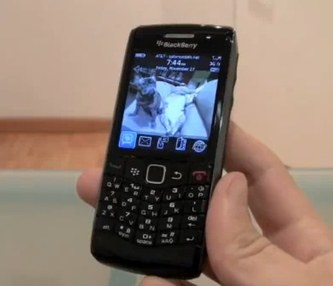



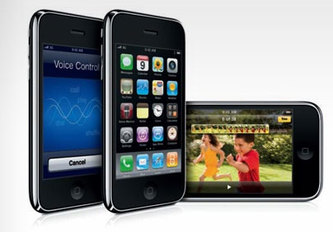
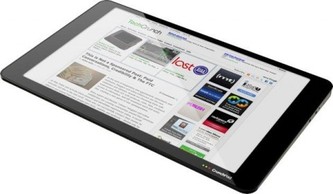
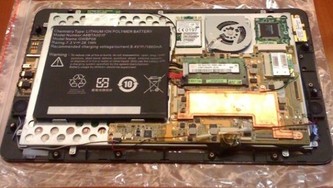

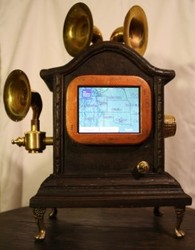

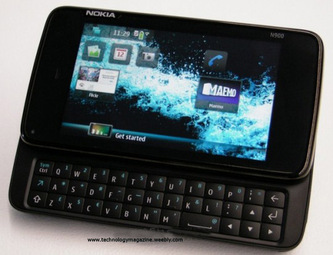
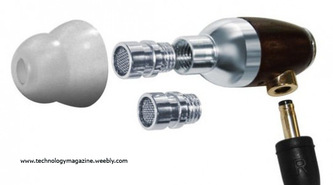


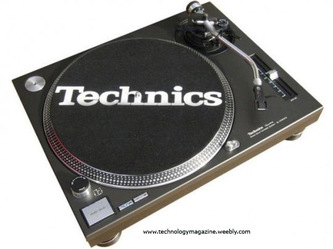

 RSS Feed
RSS Feed
